1990 – 2020
A rarely seen evolution in artistic practice, Francesca came into painting as a sculptor, as the painted imagery of her sculptures led her into the world of painting. In the mid 90s, she started working with oil, but was gradually seduced by watercolour and pastel. Watercolour pigments are alive, and Francesca considered it a challenging medium to work with, ‘having its own life’. “All I had was water and live pigments interacting! … But I liked not having the control.” In her pastel work, she uses her fingers to apply the material in frottage, rather than directly applying the sticks. Also central to her painting, she works on the wall rather than on an easel, which allows her more spatial freedom, using rolls of canvas and paper stapled to the wall to free herself from the frame constraint.
Anatomy and beyond: ‘The Backs’ and ‘Silhouettes’
Francesca started working on the human form in oil and in particular the back. “Like the dark side of the moon, the emotional quality of the back is very difficult to work with. People have facades, but the back is mysterious and vulnerable, one cannot control. This is where lay the unseen and unknown emotions we have.” Focusing on the movement of the body rather than anatomical depiction, Francesca’s paintings relay the essential emotional quality/movement of the body.
Working with music, rock, or jazz, she first produced a series of pieces which offer bright, vibrant, coloured pastels with classical bodies drawn on bubble-wrap paper. The humble bubble paper playfully gives a textural imprint to the paintings and enhances the movement of the figures. “They are a clin d’oeil to Pop Art, its joy and gaiety. I was always an avid colourist, and I loved the idea of doing classical paintings, pop-art style on pop-up bubble paper!”
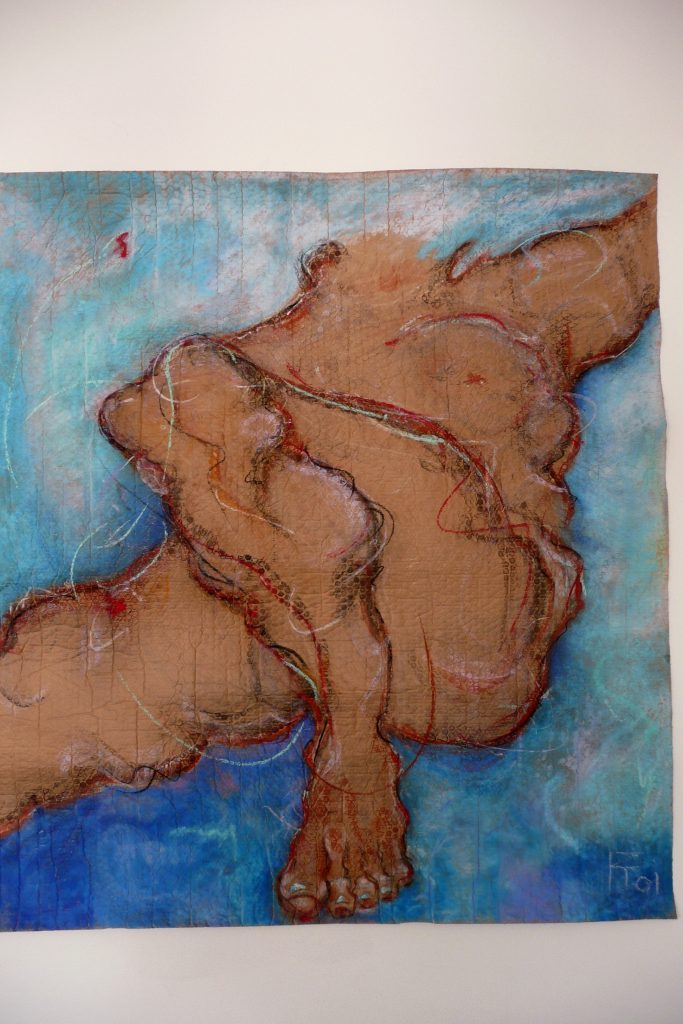
True to her nature, the colourist then decided to restrict her palette to monochrome tones based on a drop-back of Italian papers in brown and black, and by candlelight. Using these papers and the shadows drawn by candlelight, the series of deeply tender pastels, ‘Brown Bodies’ (2016) use soft chiaroscuro and sfumato effects to let the viewers discover the painting by themselves and the contours of the form. In the ‘Hourglass’ series (2015), composed of 4 panels of 3 paintings, the light subtly moves down from canvas to canvas, through the same form, revealing different parts, highlighting, or smoking out some of the contours. The colour range, between ochres and burnt sienna, give the series a sand-like quality, such as in the hourglass, representing the flow of life. “We all go through an hourglass… and then the sand runs out!”. The pastels ‘Light Fandango’ (2014) and the ‘Female Silhouettes’ (2014) celebrate the female form moving to a sensual rhythm, flowing across the canvas, just captured in the emotional moment.
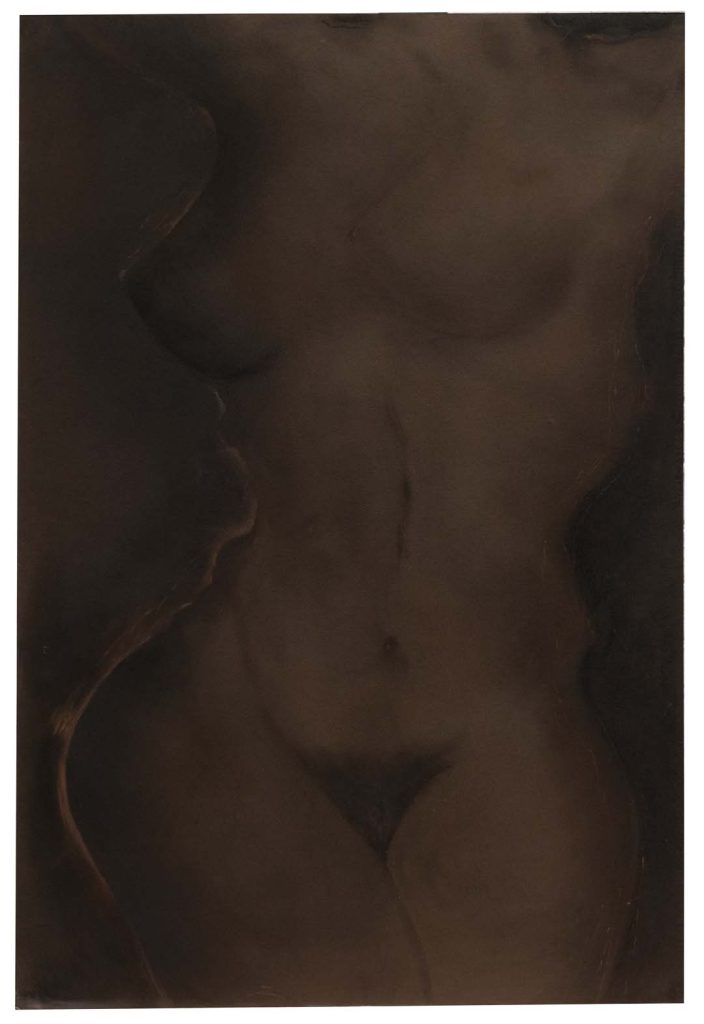
‘Paysages Déchirés’ and ‘Outer Worlds’
“I was never interested in landscapes, but a collector of mine visiting my Paris studio one day said that my backs were like landscapes. I was surprised and turned one of the canvases horizontally and there it was!” In her landscape work, Francesca uses Nepalese, Japanese or Italian paper and applies watercolour. Then, she carefully tears areas of the paper by hand, working it to create delicate layers, white or coloured cotton-like bands suggesting hillsides, slopes, or ridges, adding extra texture to the landscape.
The mountain ranges, slopes or elements of space first appear ‘in the palm of her hand’ as if born from the paper rips. “A micro-world, l’infiniment petit, then becomes an outer world, l’infiniment grand, when it is collaged.” Parts of the canvas are often laid bare to give even more space. The series ‘Outer Worlds’ (2021) are free-hand watercolour rips collaged to create shapes of mountains, planes, or dark spaces where layered or floating objects come into existence within, as if moons, planets or clouds drifted inside the canvas. “I am looking at nature, but they are not real worlds, I am creating my own universe.”
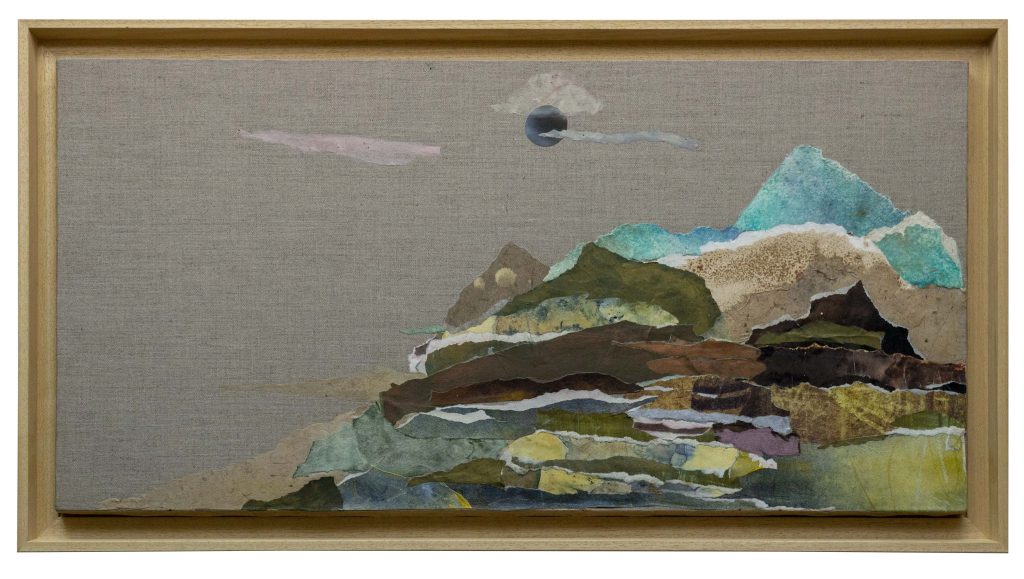
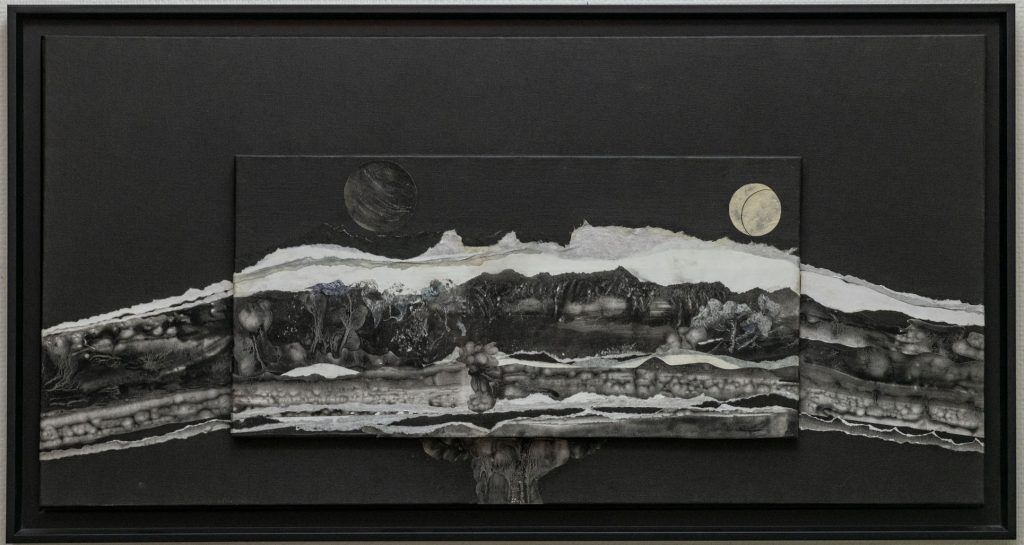
Francesca’s landscape work goes further still in the search for space with ‘Off the Canvas-Overflowing Landscapes’ (202X). This bold series shows worlds in the process of creation, newforming landscapes represented in the present flow of their existing, colliding, joining, meeting, or erupting existence.
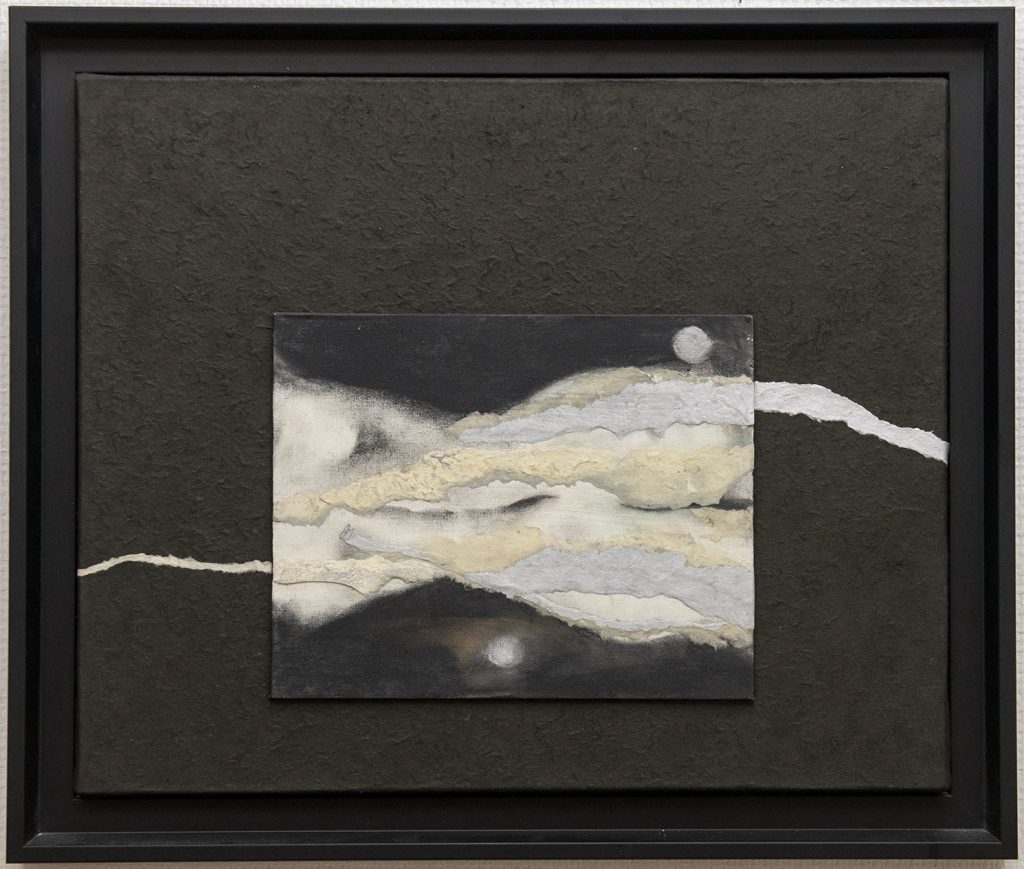
“To me, the planets are evolving themselves. They are existing parallel worlds.” Placing a small canvas on a larger canvas, Francesca allows parts of the forming world in the actual collage-painting to overflow into the larger space of the supporting canvas. “Having had a Norwegian grand-mother, I am taken by very bare, low, Nordic landscapes. I can’t see anything in the Lake District! I need the fireworks of unlimited, merged worlds, the versatility of earth and water, of air and sand merging together, where there is no horizon line. Even to this day, I can’t be surrounded by mountainous space.” Francesca’s paintings are a fascinating continuation of her sculptural practice and collage work – she paints the body, she paints landscape, as sculptures – but also a work of harnessing, a containment in two-dimensionality which, ultimately, reveals the essence of wider space.